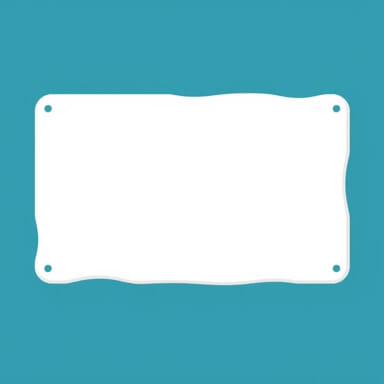When planning an interior renovation or construction project, choosing the right materials for your walls and ceilings is essential. Two of the most commonly mentioned terms in this context are gypsum wallboard and drywall. These names are often used interchangeably, which can cause confusion among homeowners and even some professionals. Understanding whether gypsum wallboard is the same as drywall, and how these terms relate to each other, is important when selecting materials, estimating costs, or communicating with contractors. Exploring their similarities and subtle differences can help ensure a smoother, more informed building process.
Understanding the Terms: Gypsum Wallboard vs Drywall
What Is Gypsum Wallboard?
Gypsum wallboard is a building material used primarily for constructing interior walls and ceilings. It consists of a core made from gypsum a naturally occurring mineral composed of calcium sulfate dihydrate which is sandwiched between two layers of durable paper. The result is a flat, smooth panel that is easy to install, finish, and decorate.
Gypsum wallboard is favored for its fire resistance, sound insulation, and ease of repair. It can be cut to size, screwed or nailed into place, and then finished with joint compound to create a seamless look.
What Is Drywall?
Drywall is essentially another name for gypsum wallboard. In North America, the term drywall is more commonly used by both professionals and the general public. It describes the same product: a gypsum-based board used for interior construction.
The term drywall comes from the fact that this method of wall construction does not require wet plaster, which was the traditional approach. Instead of applying layers of wet plaster over wooden laths, drywall panels can be installed quickly with minimal mess.
Are They the Same Thing?
Yes, gypsum wallboard and drywall refer to the same basic product. Both are made from gypsum sandwiched between sheets of paper and are used for building interior walls and ceilings. The choice of terminology often depends on the region or the context:
- Drywallis the most common term in the United States and Canada.
- Gypsum boardorgypsum wallboardis more technical and may be used in specifications, contracts, or formal documents.
- Other names includesheetrock(a brand name),plasterboard(common in the UK and Australia), andwallboard(a general term).
Despite the different names, these terms describe the same product unless additional modifiers are used to describe variations or specialty types.
Common Types of Drywall or Gypsum Wallboard
While the base product is the same, there are several variations designed for specific applications. These include:
1. Standard White Board
This is the most basic and widely used form of drywall. It’s typically white on one side and gray on the other, suitable for most dry interior spaces.
2. Green Board (Moisture-Resistant)
Green board contains moisture-resistant additives and is used in areas with some humidity, such as bathrooms and basements. However, it is not waterproof.
3. Blue Board (Plaster Base)
Blue board is designed for use with veneer plaster and has special paper that bonds with plaster. It’s often used in high-end residential construction.
4. Fire-Resistant Drywall (Type X and Type C)
These boards have added fire-resistant properties and are used in garages, furnace rooms, and between apartment units. Type C offers enhanced fire performance.
5. Soundproof Drywall
This drywall includes extra layers or specialized cores to reduce sound transmission. It is ideal for music rooms, offices, or shared living spaces.
6. Mold-Resistant Drywall
Designed for high-humidity areas, this type uses fiberglass mat instead of paper to resist mold growth. It’s commonly installed in kitchens, bathrooms, and laundry rooms.
Advantages of Using Gypsum Wallboard/Drywall
Ease of Installation
Drywall is lightweight and can be installed quickly with basic tools. Panels are easy to cut, hang, and finish, reducing labor costs and time on the job site.
Cost-Effective
Compared to traditional plaster methods, drywall is more affordable in terms of both material and labor. It also requires fewer steps and less drying time.
Fire and Sound Resistance
Gypsum naturally resists fire, making drywall a safer choice for homes and buildings. Specialized types offer enhanced fire ratings and improved acoustic performance.
Repairable and Customizable
Drywall can be patched and repainted easily if damaged. It also supports a variety of finishes, from paint and wallpaper to textured coatings.
Limitations to Consider
Moisture Sensitivity
Standard drywall is vulnerable to water damage and mold if exposed to moisture. In wet areas, moisture-resistant or cement-based boards are more appropriate.
Structural Limitations
Drywall is not load-bearing and should be attached to a framing system. It can crack under excessive pressure or movement if not properly supported.
When to Use Each Term
In practice, it often doesn’t matter whether you call it drywall or gypsum wallboard especially when speaking casually or shopping at a local hardware store. However, knowing the distinction can be useful:
- Use gypsum wallboard when reading technical manuals or working with building codes.
- Use drywall in everyday conversations with contractors, suppliers, or DIY forums.
- Use plasterboard if you’re in the UK, Australia, or New Zealand.
Summary: Gypsum Wallboard Is Drywall
Despite the many names it goes by, gypsum wallboard and drywall are, in most cases, one and the same. They serve the same purpose and are made from the same core materials. Whether you’re remodeling a home, finishing a basement, or building a new structure, you’ll likely be working with gypsum-based panels known in North America as drywall.
Understanding this terminology ensures better communication with contractors and suppliers, allows for smarter purchasing decisions, and helps you navigate specifications with greater confidence. The next time you hear either term, you’ll know they’re referring to the essential building material that shapes modern interior construction.
